This is our ranking of the top 10 best 80s rock bands, containing band names and year of formation.
| Rank | Band | Year of Formation |
| 1 | Metallica | 1981 |
| 2 | Guns N’ Roses | 1985 |
| 3 | The Police | 1977 |
| 4 | Motley Crue | 1981 |
| 5 | Talking Heads | 1975 |
| 6 | Pixies | 1986 |
| 7 | Sonic Youth | 1981 |
| 8 | The Cure | 1978 |
| 9 | The Smiths | 1982 |
| 10 | Minor Threat | 1980 |
Hindsight is 20/20. It is one of the inalienable facts of life, and it makes it possible to be smart after the fact, which is of course one of life’s great pleasures. Allow us, then, to be slightly indulgent. Imagine you were pressed into nominating a single era that influenced the music industry’s transition toward the modern model; a constellation of loosely affiliated and self-sustaining individualist brands (looking at you, Ye) that occasionally design to record and release some music. The answer, we offer smugly, would be the eighties.
At the same time that the unabashedly youth-centric launch of MTV in 1981 allowed a generation of kids a new, bite-sized, form of musical gratification, the bursting of the first punk bubble passed the torch to a new generation of performers, promoters and ideologues. It was a fertile breeding ground, aided and abetted by the arms race of the first bloom of personal music technology. Allowing for the invention of the CD in 1982, and the seeds of the overwrought battle for music’s soul that was sown by the long, sad farewell to vinyl, you could say the whole decade was pretty seismic. We haven’t even mentioned the cultural and stylistic dynamics and trends, but suffice to say, that the ’80s gave rise to a (possibly) unique generation of rock bands. Ten of which we’re here, like the rock bands of the ’70s and rock bands of the ’90s, to shine a light on.
#10 Minor Threat
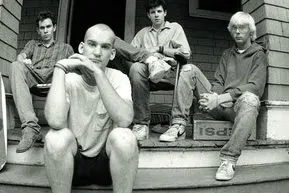
YEAR OF FORMATION: 1980
There are bands who grow in stages, developing sounds and styles over time while striving for something seemingly always beyond the horizon in the pursuit of a definitive artistic statement. There are bands who arrive fully formed, as if from the future or outer space, with a defined blueprint and a determination to stick to it, fully convinced of their place in the world.
Then there are bands who seemingly bypass their own career entirely and just get straight on with being iconic.
Minor Threat was formed in 1980 and was active for all three years, releasing one studio album (a little over twenty minutes long) and three EPs. Their songs rarely trouble the three-minute mark, fast, furious garage punk, drill sergeant vocals from the incomparable Ian MacKaye and unflinchingly political lyrics. It goes without saying that this isn’t for everyone. But, you would be hard-pressed to find a more influential band when it comes to alternative music in the US. Minor Threat drew up the blueprint for hardcore punk, and MacKaye also gave the scene a home by founding Dischord Records, also going on to perform with a whole host of other bands, notably Fugazi.
Trivia: Minor Threat’s song ‘Straight Edge’ as well as being a distillation of Minor Threat’s unique sound, also lent its name to a subculture built around abstinence.
#9 The Smiths
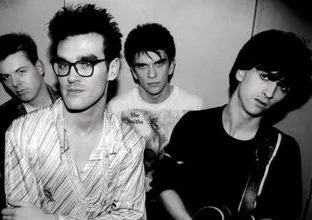
YEAR OF FORMATION: 1982
The band that turned miserabilism into an art form, and another flash in the pan who spent their brief time together laying the foundation for what was to come. Although they were always too acerbic and snarky to make much of a mainstream impact, and their sensibilities too distinctly English to have much of a direct impact on the wider culture, The Smiths’ influence on the subsequent four decades of British guitar music is indelible.
With Johnny Marr’s jangling, virtuosic and yet simple guitar directly feeding into the imagination of a generation of musicians in the English Northwest’s fertile music in scene and beyond, and Morrissey’s flamboyance and stridency, British music had unearthed a new Lennon and McCartney. While Morrissey’s behavior and frequent outbursts in the years since have become increasingly problematic, the music he made with The Smiths has retained its sheen, coated in amber. It can be easy to overstate these things, but without The Smiths it is hard to see where British indie at its best, Radiohead, Blur and Suede, would break through. You also don’t need to take our word for it, with four of the band’s albums and two of their songs included on Rolling Stone magazines’ venerable greatest-ever lists.
Trivia: The band’s song, ‘How Soon is Now?’ one of those recognized by Rolling Stone, was used as the theme song for the fantasy series Charmed. Whether or not that is a compliment, we guess a matter of perspective.
#8 The Cure
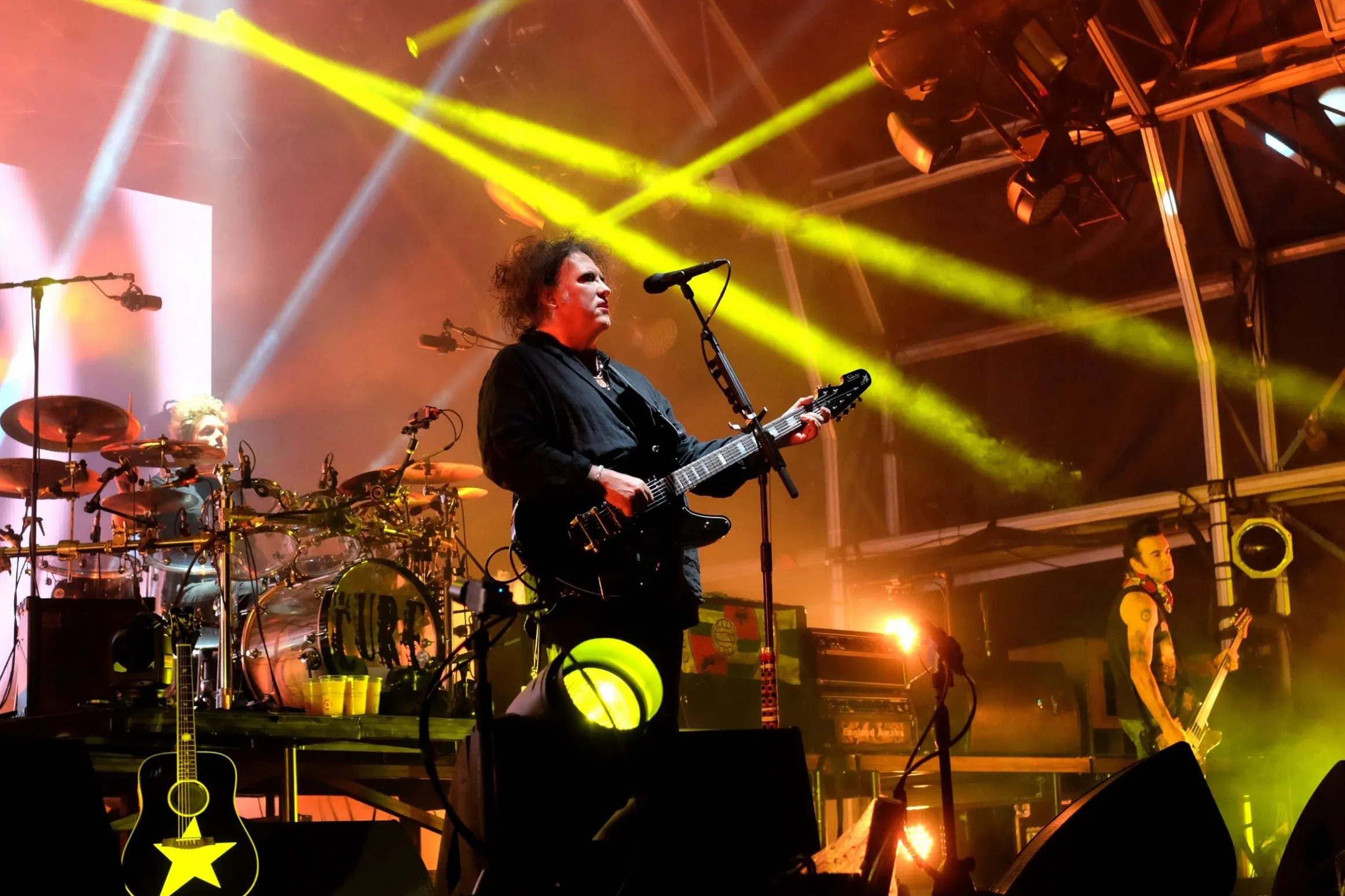
YEAR OF FORMATION: 1978
Misery loves company. Yes, it is a line taken from a sixteenth-century German play about the dangerous lure of wish fulfillment, but also a pretty good summation of what makes The Cure work. Also, a pretty good indication of the band’s stylistic influences. Easily the most famous exponents of the gothic rock scene of the late 70s and early 80s, The Cure do miserable better than nearly anyone else, see above.
With their distinctive look and deceptively expansive musical styles, melding romantic melodrama with undeniable pop charisma, Robert Smith and friends, for a generation of slightly sad youths, ensured black was the new black. An air of mystique and romance was part of the band’s stock in trade, but songs like ‘Boys Don’t Cry’ and ‘The Lovecats’ and ‘It’s Friday I’m In Love’ ensured that the band was no strangers to the mainstream. The band spent the eighties building a reputation as beguiling, yet popular, outsiders, and finished it by issuing probably their most important album in ‘Disintegration’.
Trivia: The Cure has many admirers, famously including South Park creators Trey Parker and Matt Stone, who featured singer Robert Smith in season one, Godzilla parody episode, Mecha-Streisand.
# 7 Sonic Youth
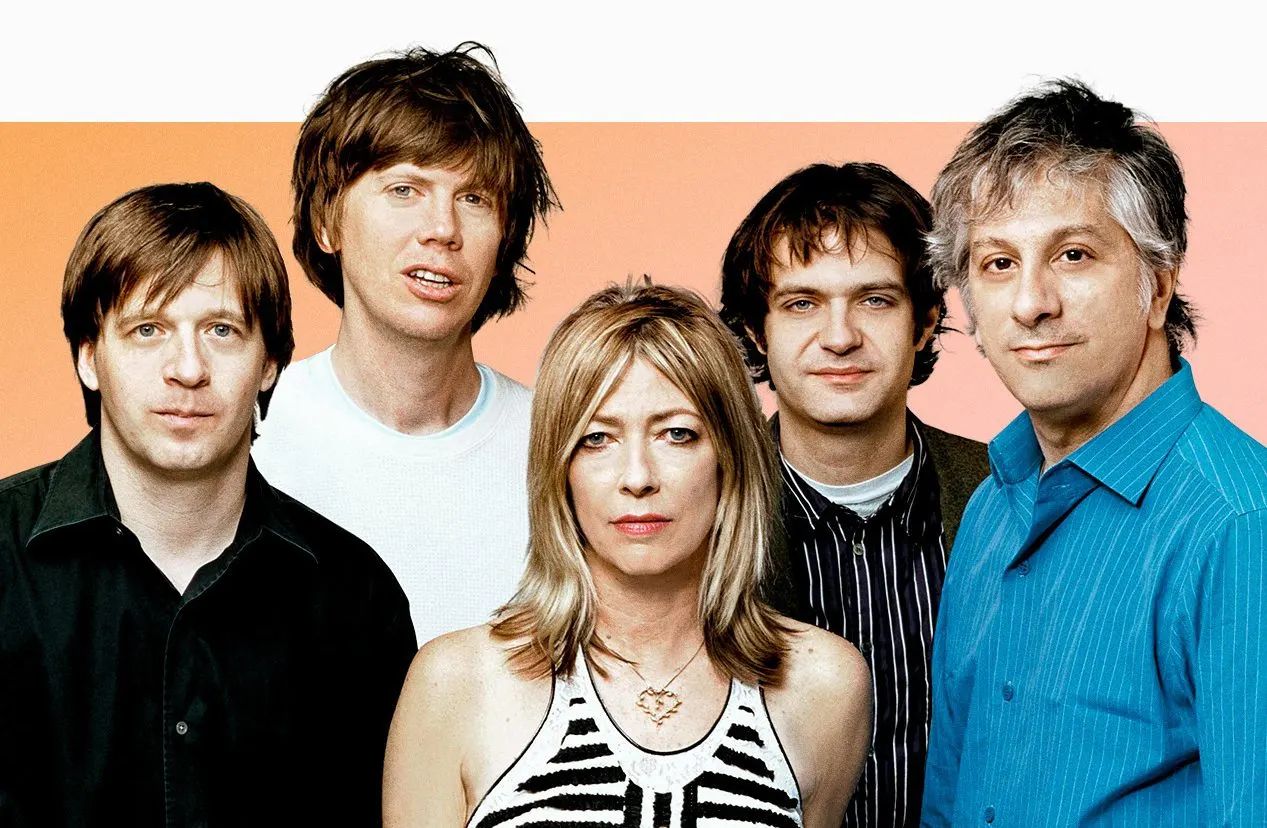
YEAR OF FORMATION: 1981
If we continue with our theory that the 80s was a decade of foundation, a series of swift gear changes toward a leaner, more expansive culture, then we cannot ignore Sonic Youth. Stalwarts of the no-wave and noise rock scenes, Sonic Youth spent the 80s doing frankly weird things to guitars and building a loyal fanbase through a series of releases on SST Records. That they managed to emerge blinking from whatever art school basement that they had been goofing around in, into the mainstream in the early part of the 90s, only speaks to the quality of their invention.
As with some other bands on this list, Sonic Youth is potentially recognized more for their impact on the scene that followed, than they are for their own merit. Put plainly, without these guys, and the influence they had, including on people such as Billy Corgan and Kurt Cobain, the 90’s alternative scene would have been that much safer, that little bit less interesting. In amongst that, though, the band proved that they were more than capable of putting a song together, ‘Teenage Riot’ from 1988’s Daydream Nation, for example, is a sort of slacker call to arms, an indie classic.
Trivia: As a measure of Sonic Youth’s popularity and mainstream credibility, the art rock doyens were included in an episode of The Simpsons, and even recorded their own version of the show’s closing theme.
#6 Pixies
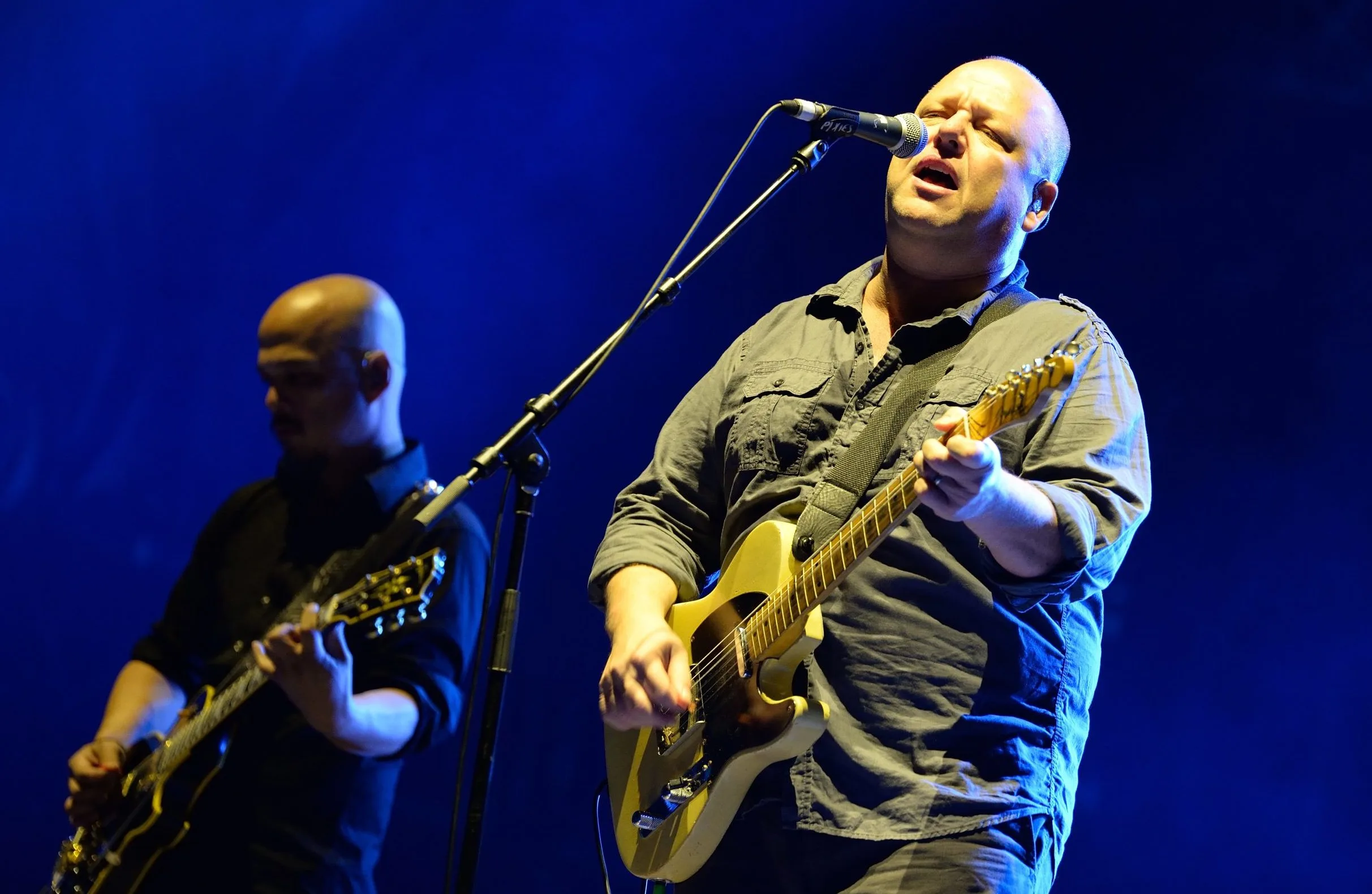
YEAR OF FORMATION: 1986
Where to start with the Pixies? Along with Minor Threat and Sonic Youth they are a band whose influence on the subsequent musical landscape is hard to overstate. Specifically in the way in which their famous quiet-loud-quiet dynamic, wherein a somewhat restrained passage will erupt without warning, made Nirvana and their contemporaries take note.
They are one of those special bands that shouldn’t work. Their first two albums, Come on Pilgrim and Surfer Rosa, contain unfathomable, often anatomical lyrics, unsignposted segues into the Spanish language, squalling feedback drenched riffs, an over-mixed rhythm section and bizarre skits. Their sound, quirks and experiments made them impossible to label, which in turn made them hard to market, but the whole thing has its own internal, if chaotic, logic which is little short of glorious. Not even mentioning their 1989 classic Doolittle, which thoroughly deserves its vaunted place as one of the defining artifacts of the American alternative scene.
Adored by fans and critics around the world, they are perhaps one of the few bands interesting enough to break out of the dreaded ‘cult’ category. For proof, look no further than bleak millennial tour de force, Fight Club, in which a Pixies song soundtracks one of modern cinema’s greatest final scenes.
Trivia: Debaser, Doolittle’s third single features a lyric that references Un Chien Andalou, the 1929 avant-garde cinematic classic by Salvador Dali. That’s the stuff they’re putting on their singles!
#5 Talking Heads
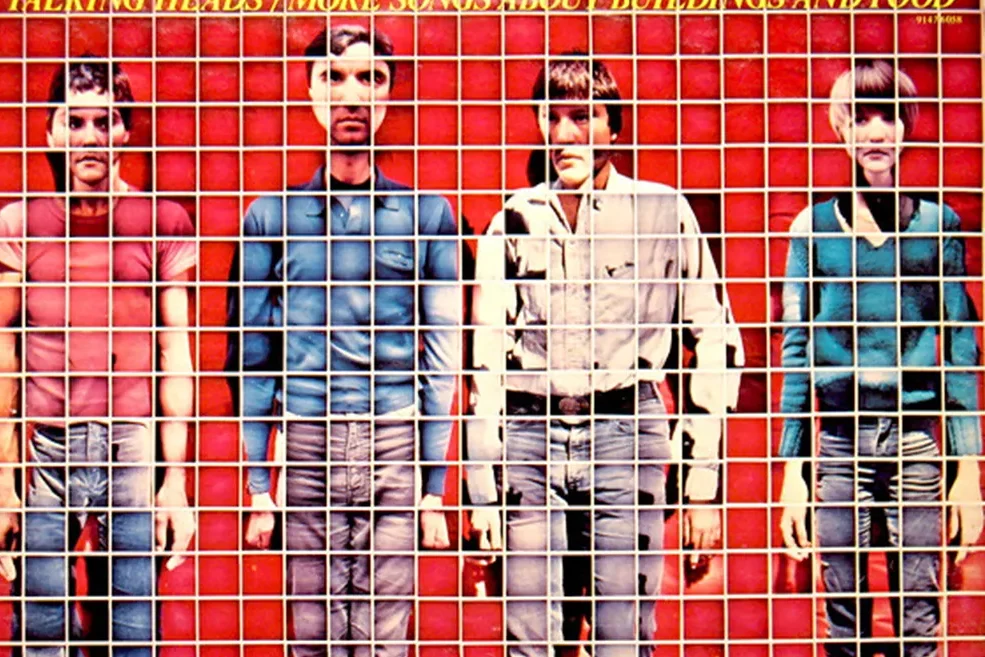
YEAR OF FORMATION: 1975
There are few bands that encapsulate the spirit of adventure through the decade, the weird and wild frontiers that the mainstream was thrilled to explore, then Talking Heads. Probably the quintessential art punks, alongside DEVO, Talking Heads formed in late 70s New York and set about reshaping the form and function of alternative music. Although they found fame and fandom almost immediately, with their unmistakable debut Talking Heads: 77 and calling card Psycho Killer, they came into their own in the 80s.
Beginning the decade with the odd, infectious and very very funky Remain In Light in 1980, the band spent the 80s seemingly having just that little bit more fun than anyone else. From chart bothering singles, to definitive albums, to recording and releasing possibly the best live music film ever made, complete with comically oversized sports jacket of course, they just had a ball. David Byrne and friends simply wore and played whatever they felt like, neatly sidestepping the sort of scenester hand-wrangling that occasionally bogs bands down, and creating an utterly glorious racket as they went.
Trivia: After the band’s dissolution in 1991, the other original members reformed the band without David Byrne, calling themselves Shrunken Heads, and then just The Heads, releasing an album in 1996 called No Talking, Just Head.
#4 Mötley Crüe
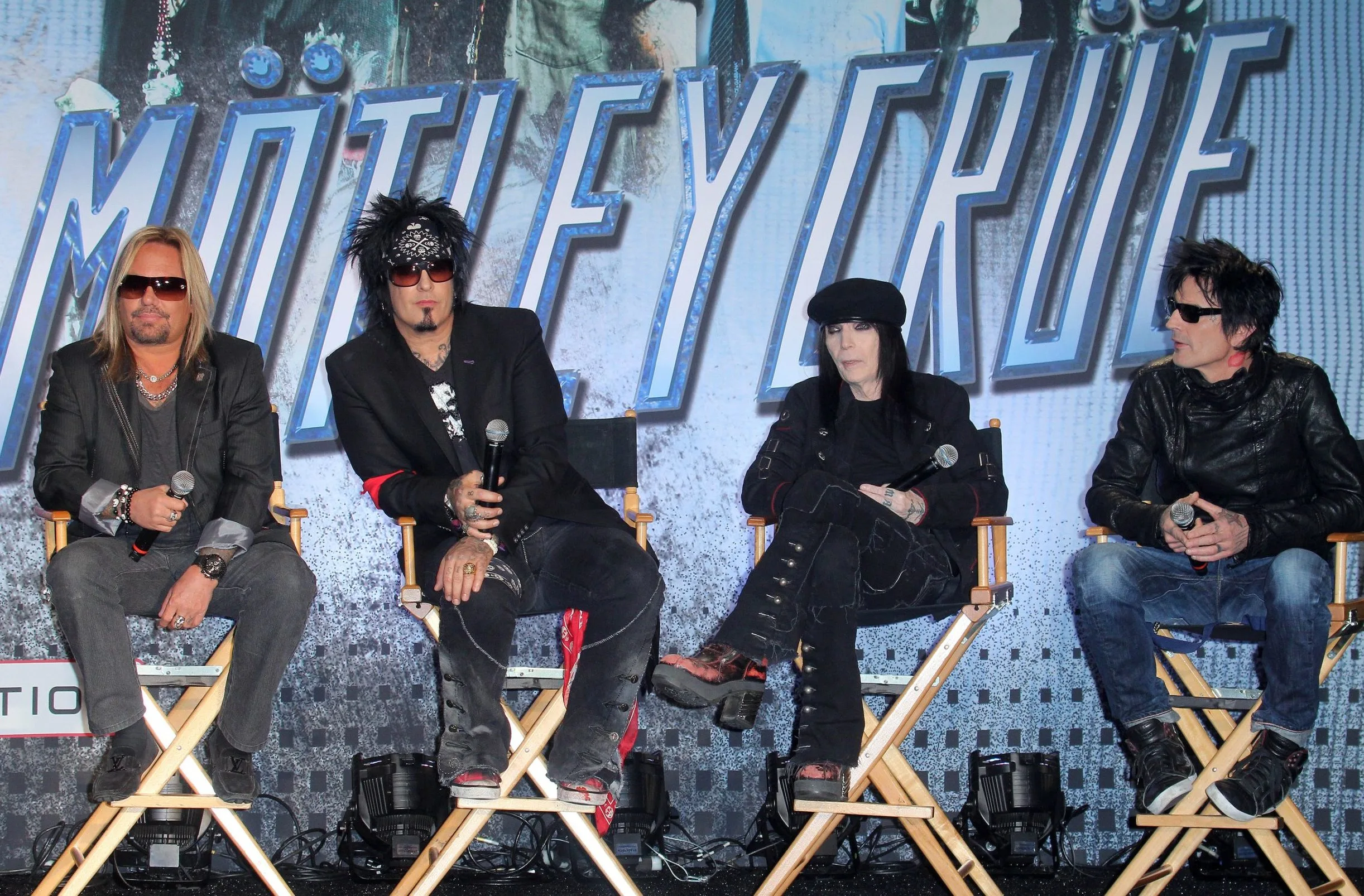
YEAR OF FORMATION: 1981
We think it’s fair to suggest that, speaking politely, history has not been kind to glam metal, as if the whole thing was some sort of mistake that none of us had any part in. In a society that has, extremely belatedly, begun redressing the power dynamics of communication and fore-fronting pop culture’s problem with misogyny, the whole fast cars and loose women schtick is queasy at best. This is not meant to sneer at that vital progress, only to provide some balance, because for all that we may have outgrown them and their peers, Mötley Crüe has sold 80 million albums to someone.
The oddly heady mix of spandex, hairspray and motorcycle grease with which they set about making a racket and having fun throughout the decade, belied a genuine songwriting craft that should leave no one surprised by their fame and popularity. After all, whichever way you slice it, only a group of talented musicians in the zone would be capable of writing a cut like ‘Shout at the Devil’ or ‘Dr. Feelgood’, and their outsized personae and unflinching depictions of the fast life definitely found a willing audience. Ultimately it was the marriage of style and substance that set them apart from their contemporaries, after all, no one ever accused Ratt of songwriting.
Trivia: In a fantastic case of life imitating art, Tommy Lee performed a live Spinal Tap tribute at the band’s farewell concert in 2016, when his famous rotating drum solo side act got stuck and left him hanging for half an hour.
#3 The Police
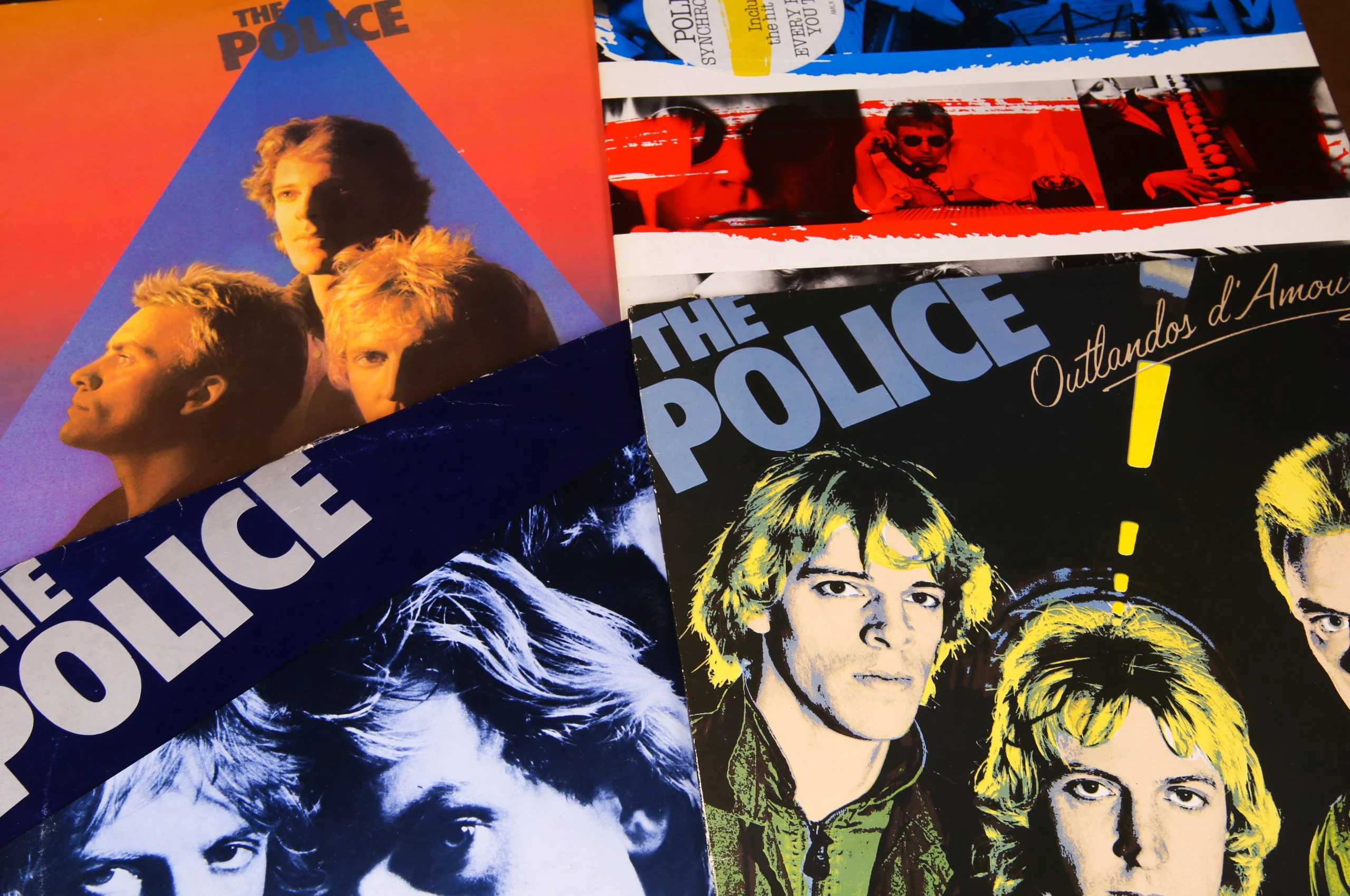
Year of Formation: 1977
The Second British Invasion was a slightly odd cultural phenomenon that saw the pop scene in the US at the beginning of the decade absolutely saturated by British talent. From Wham! to Duran Duran, to The Pet Shop Boys, there’s probably a whole article to be written just about that. A generation of American record buyers looked further afield, and found a generation of heavy-hair sprayed blue-eyed boys following in the footsteps of the blues rockers of the 60s.
In that context The Police, and the success they found, shouldn’t necessarily stand out as an oddity. That they do is probably because they’re an inherently odd band. A post-punk outfit from London, who according to their own guitarist, Andy Summers, only stumbled on their famous reggae-influenced sound because Sting couldn’t quite be bothered to play the bass all that much. But it is precisely that ability, to marry the skills and ambitions of the band members to an unerring desire to figure out how to make this thing work, that is at the core of The Police. That, a bag full of stadium-sized tunes, one of popular music’s best-ever drummers in Stewart Copeland, and a bona fide poster boy in Sting, ensured the band enjoyed a particularly fruitful decade.
Trivia: As if the band’s influences and style weren’t quite explicit enough, they were kind enough to give people a clue, their second album was called ‘Regatta de Blanc’, or White Reggae.
#2 Guns N’ Roses

Year of Formation: 1985
Now while we may have touched on the rapidly, and deservingly, diminishing standing of Glam Metal in the years since its 80s heyday, we would hesitate to pour the same scorn on Guns N’ Roses. Apart from anything else, their late career in general, and the behavior of founding member and vocalist Axl Rose specifically, has done most of the revisionism for us. After all, we can’t be the only ones burned by our near ten-year wait to be completely underwhelmed by the band’s 2008 album/sedative ‘Chinese Democracy’.
But that is all to ignore what made the band so compelling in the first place. The fact that they released one of the pre-eminent examples of the ‘all killer no filler’ albums, as their debut no less, should not be forgotten. Neither should the fact that, in Slash and Axl, they had an all-time heavyweight rock and roll duo, both talented enough to make the mainstream take a second look at their craft. Neither should the fact that they managed, within all the bluster of their debut, to turn one of Slash’s warm-up routines into, ‘Sweet Child o’ Mine’ a song that perfected the form of the rock ballad. GnR is that rarest thing in that they exist as a point of consensus within music fandom, just as almost everyone is aware of their lows, almost everyone is unable to resist the power of their highs.
Trivia: Axl Rose’s reputation as a problematic person is well known and, unfortunately, well deserved. There are dozens of high-profile examples of his poor behavioral record, but one particular stand out is the time he was replaced on stage by a roadie, because he was being held by police backstage for assaulting a security guard.
#1- Metallica
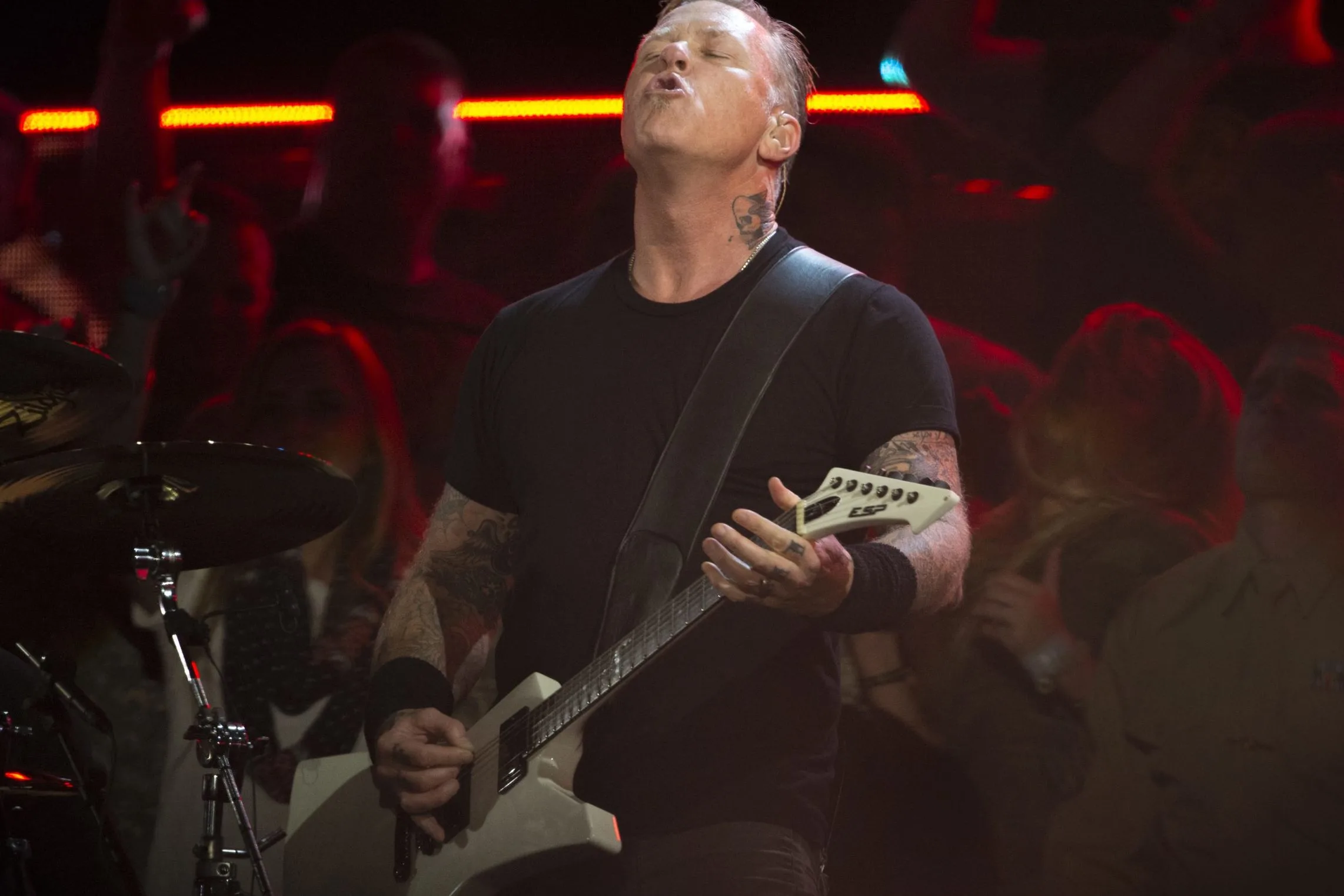
YEAR OF FORMATION: 1981
Metal can be an impenetrable genre sometimes, a labyrinthine scene of peculiarly hardline subgenre wrangling, a particularly boring brand of alpha male, and a lot of frankly shoddy work. But, as all the true believers know, at its best it can be a primal, transformative source of pure energy. And that’s where Metallica comes in. ‘Kill ‘Em All’, ‘Ride the Lightning’, ‘Master of Puppets’, ‘…And Justice for All’. In the 80s alone, and despite the fact that they have remained active, a distracting lawsuit against Napster here, an overwrought recording-process-driven falling out there, Metallica came as close as any band ever has, to nailing the whole genre.
Their sales figures are well known. Despite their being ostensibly a niche concern, their all-time sales sit comfortably in the top 20, between Abba and Mariah Carey no less. Their enduring popularity is due to the fact that, even being formed in 1981, they walked straight to the front of the queue, and stayed there. The biggest of the ‘Big Four’ of thrash metal, Metallica didn’t so much cross the divide toward the mainstream, but completely destroyed it. While their achievements during the 80s are more than deserving of this spot, the fact that they only cued themselves up for greater things in the subsequent years is nothing short of incredible.
Trivia: Metallica’s legal team threatened to sue one cover band over the use of Metallica’s trademark font in their logo. The threat was quickly dropped when Lars Ulrich, Metallica drummer and lifetime band member, found out about it. He even called one of the band members to give him Metallica’s “full blessing”.
Runners Up:
- AC/DC: Only didn’t make this list, because they already made our list for 70s bands
- U2: While we have recognized their unique sound and massive popularity in the past, perhaps a little too self-contained to carry the influence of the acts in our top ten
- R.E.M.: College radio heroes and indie forefathers to rival anyone on our top ten, featured in our 90s top ten instead.
- Bad Brains: One of the most influential US punk bands of all time, only Ian MacKaye’s outsized achievements and reputation kept them off the list.
- Slayer: With all due respect to Kerry King and co. 80’s metal knows only one true master, and for all that their musical aggression and technicality are lauded, Slayer is not it.
So, whoosh. There we have it. Perhaps not a group of bands to trouble the all-time sales charts, with some notable exceptions, but a selection that, we hope, represents the unique appetite for expression and growth that the 80s engendered. As always, please let us know what you think, and please, be excellent to each other.